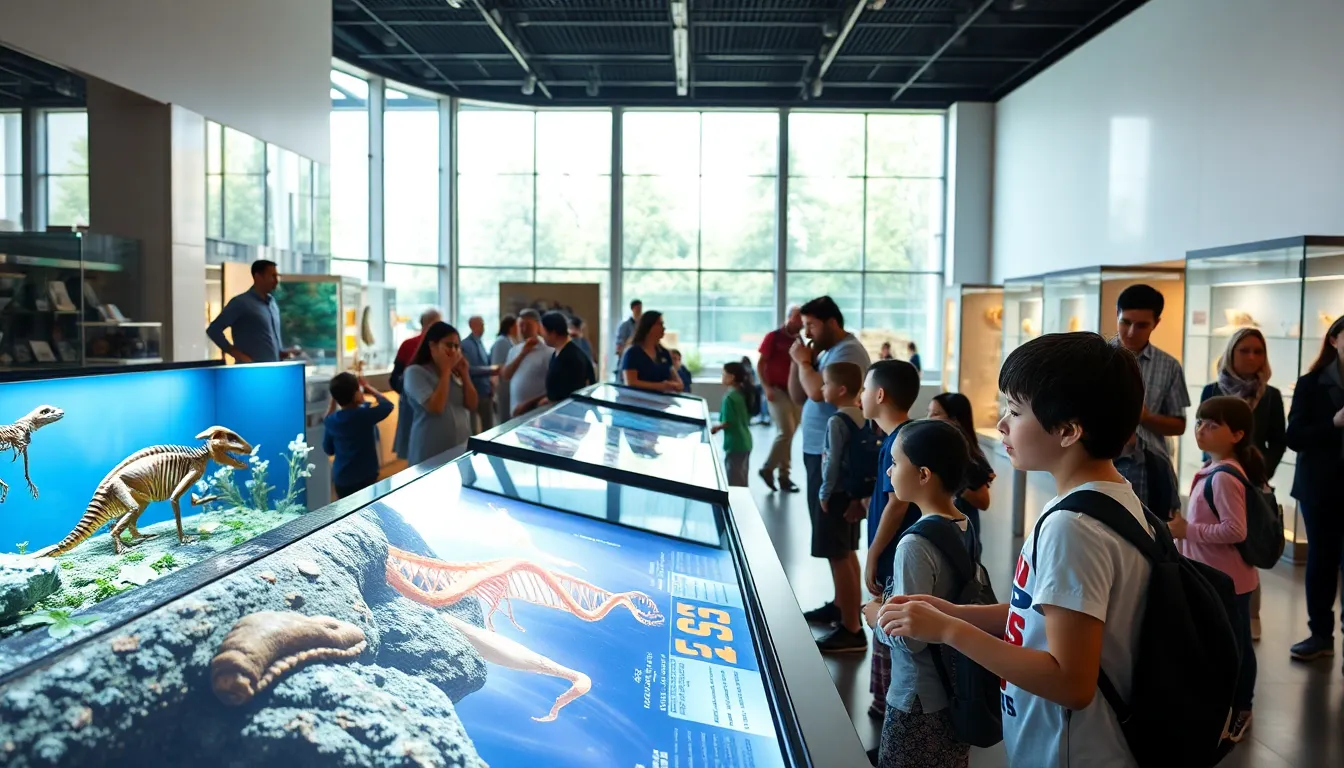Imagine stepping into a place where the wonders of nature unfold before your eyes, where dinosaurs roam freely (well, not really), and where hands-on exhibits invite exploration. That’s the magic of life science museums. But how did they evolve from dusty curiosity cabinets to the interactive hubs of knowledge enjoyed today? Buckle up as we embark on a fascinating journey through the evolution of these museums, revealing their profound educational impact and the technological innovations that keep them relevant in our fast-paced world.
Table of Contents
ToggleThe Historical Development of Life Science Museums

Life science museums have a rich history that reflects the changing ways humans understand the natural world. From ancient collections of oddities to today’s sophisticated displays, each stage of their evolution tells a unique story.
Key Milestones in Museum Evolution
It all began with curiosity cabinets during the Renaissance, collections where wealthy patrons displayed artifacts from natural history. These cabinets paved the way for the first formal museums, such as the British Museum in 1753. Fast forward to the 19th century, when the concept of public education gained momentum. Museums started focusing on scientific accuracy and educational value, marking a pivotal shift in their purpose.
The Shift from Curiosity Cabinets to Modern Exhibits
No longer limited to curiosities, life sciences evolved into comprehensive learning centers. These museums embraced themes of evolution, ecology, and genetics, intertwining science with storytelling. The focus shifted from merely showcasing items to creating immersive experiences that invite deeper understanding. In this transformation, they became spaces where science interacts with culture, emphasizing conservation and sustainability while inspiring curiosity in visitors of all ages.
The Role of Life Science Museums in Education
Life science museums serve as dynamic learning environments, making science accessible and enjoyable for everyone. Their role extends beyond traditional education.
Engaging the Public: Innovative Approaches to Learning
Today’s museums realize the importance of engaging visitors actively. They employ innovative teaching methods, organizing workshops and interactive talks that cater to diverse audiences. Guest speakers, ranging from researchers to artists, bring fresh perspectives, enhancing the overall educational experience.
Interactive Exhibits and Hands-On Learning
Gone are the days of merely looking at displays behind glass. Interactive exhibits encourage hands-on learning, allowing visitors to touch, manipulate and experiment. Whether it’s a life-size model of a dinosaur or a virtual aquarium, these installations foster a sense of wonder and discovery. By encouraging questions and exploration, museums spark curiosity that often leads to a lifelong interest in science.
The Impact of Technology on Life Science Museums
In the digital age, technology profoundly influences how life science museums operate. From virtual experiences to digital resources, innovation is at the forefront.
Digital Resources and Virtual Exhibits
No longer just confined to physical locations, life science museums use digital platforms to reach a broader audience. Virtual exhibits offer people around the globe the chance to experience the wonders of nature from their own homes. These immersive tours, often interactive, ensure that the museum experience is no longer limited by geographic barriers.
Augmented Reality and Interactive Displays
Augmented reality (AR) is revolutionizing museum experiences. Imagine pointing your smartphone at a display and watching a dinosaur come to life right in front of you. AR and interactive displays allow for deeper engagement, turning passive observation into active participation. This technology not only enhances understanding but also makes learning memorable.
Challenges and Future Directions for Life Science Museums
Even though their many successes, life science museums face challenges in a rapidly changing landscape. Adapting to these changes is crucial for their continued relevance.
Adapting to Changing Visitor Expectations
As public expectations evolve, museums must keep pace. Visitors today demand more than just passive experiences: they want deeper connections and relevant content. Meeting these expectations requires constant innovation and adaptation, ensuring that programs and exhibits resonate with audiences.
Sustainability and Inclusivity in Exhibit Design
Sustainability is another pressing issue. Museums are increasingly adopting eco-conscious practices in exhibit design, emphasizing conservation themes. Besides, inclusivity must be prioritized. Life science museums should create experiences that appeal to diverse audiences, ensuring that everyone feels represented and included. By embracing these principles, museums can foster a richer, more inclusive environment.



